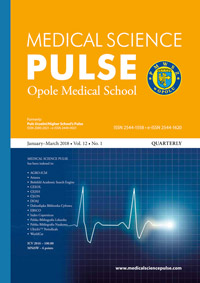Telomeropathies – rare disease syndromes.
Telomeropathies – rare disease syndromes.
Author(s): Anna Pańczyszyn, Ewa Boniewska-BernackaSubject(s): Health and medicine and law
Published by: Państwowa Medyczna Wyższa Szkoła Zawodowa w Opolu
Keywords: telomeres; telomerase; telomeropathies
Summary/Abstract: Telomeres are located at the end of the chromosomes. They protect chromosomes from fusion and degradation. Every cell division causes a shortening of the telomeres. A special enzymatic complex called telomerase is responsible for maintaining telomere length in intensively dividing cells, such as epithelial cells and bone marrow cells. The enzymatic complex includes the TERT subunit, which has reverse transcriptase activity, and the TERC subunit, which acts as a template. Other important components of telomerase are the proteins that are responsible for structural stability. Telomerase remains active only in the dividing cells of the body. The rate of telomere shortening depends on many factors including age, sex, and comorbidities. Faster shortening of telomeres is caused by gene defects, which have an impact on telomerase action. Collectively, these are called telomeropathies. Common causes of telomeropathies are mutations in the TERT and TERC telomerase genes. Types of telemeropathies include dyskeratosis congenita, idiopathic pulmonary fibrosis, and aplastic anaemia, among others. Clinical manifestations and prognoses depend on the type and quantity of mutated genes. Diagnosis of telomeropathies is often problematic because they present with the same symptoms as other diseases. So far, no effective therapeutic methods have been developed for telomeropathies. A therapeutic method for patients with bone marrow failure may be the transplantation of hematopoietic stem cells. For patients with idiopathic pulmonary fibrosis, treatments include immunosuppressive therapy, lung transplantation, or palliative care. In the future, gene therapy may be an effective treatment strategy for telomeropathies. Lifestyle changes may also have a positive impact on the person. Physical activity combined with a healthy diet rich in antioxidants and unsaturated fatty acids can decrease the oxidative stress levels in cells and lead to a slower shortening of the telomeres.
Journal: Medical Science Pulse
- Issue Year: 12/2018
- Issue No: 2
- Page Range: 47-50
- Page Count: 4
- Language: English

